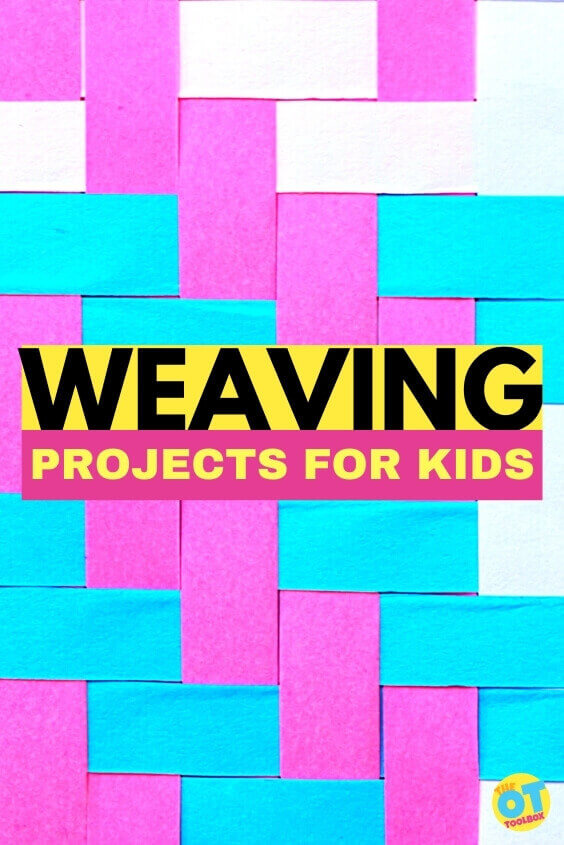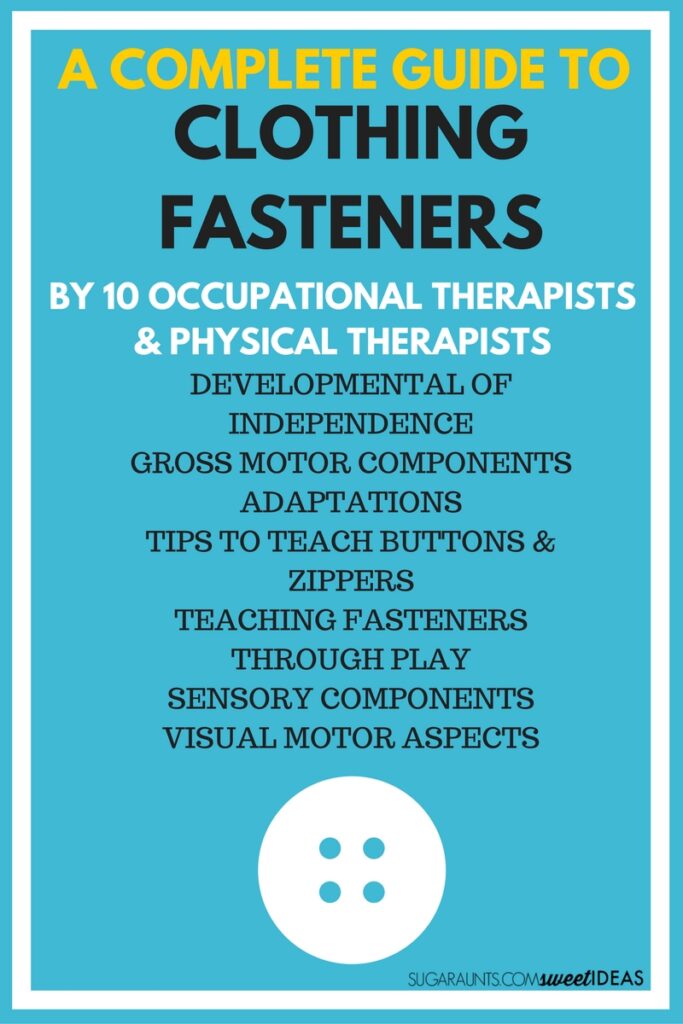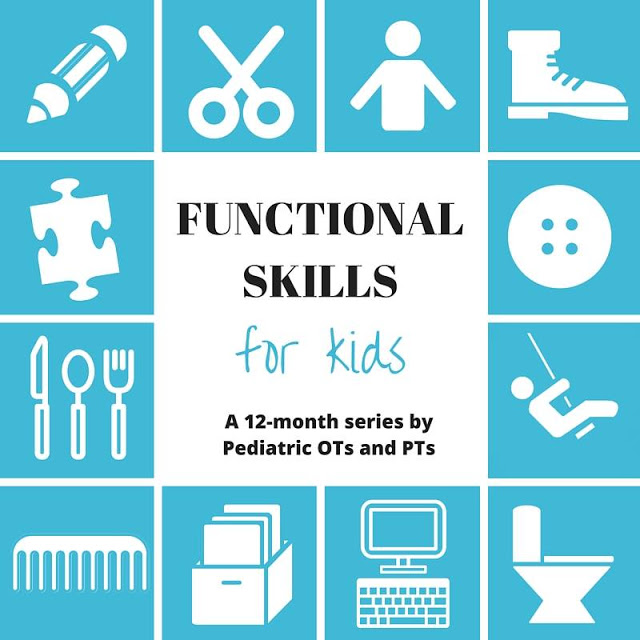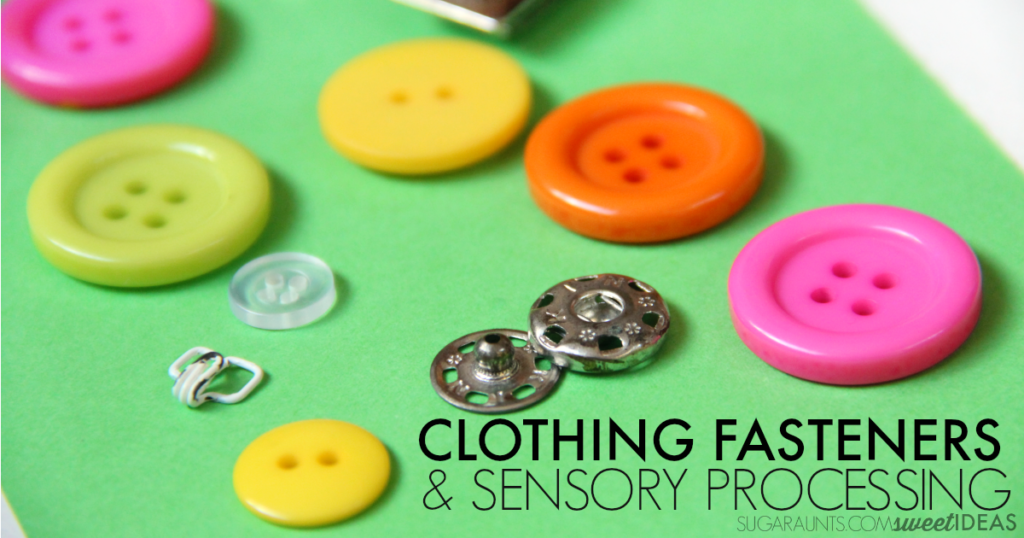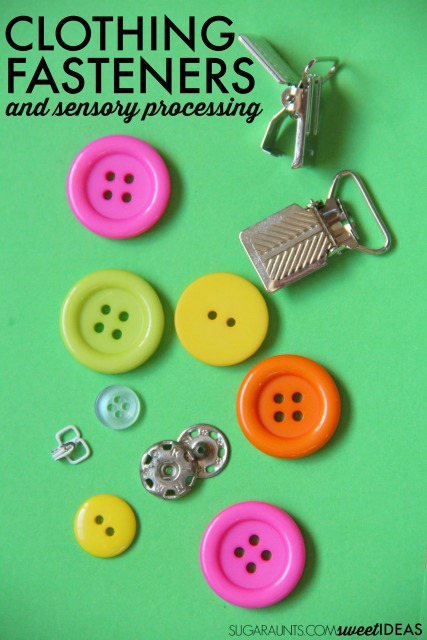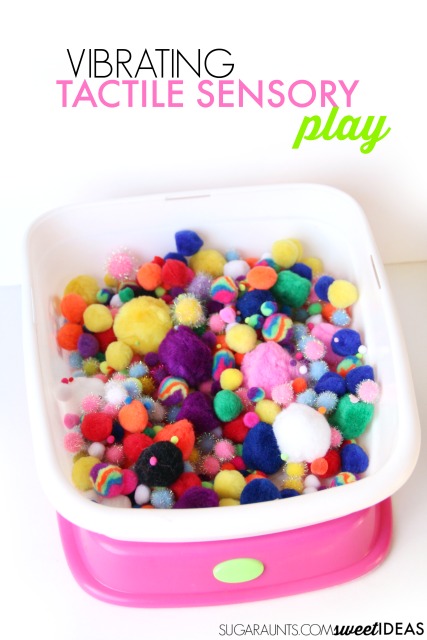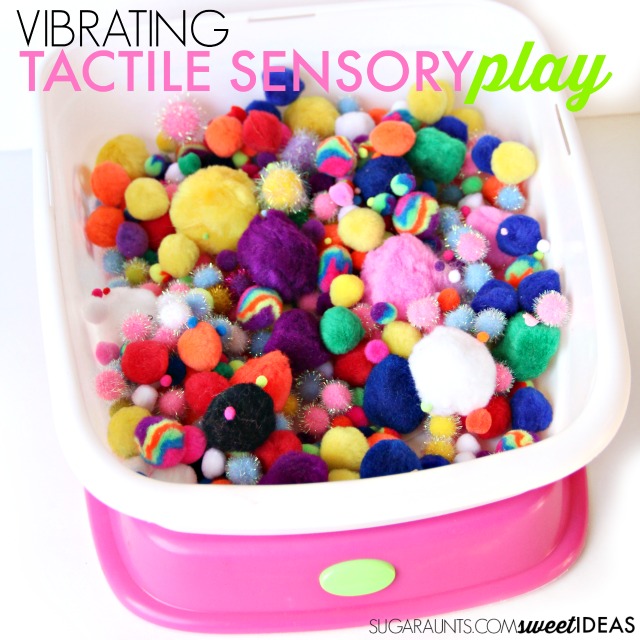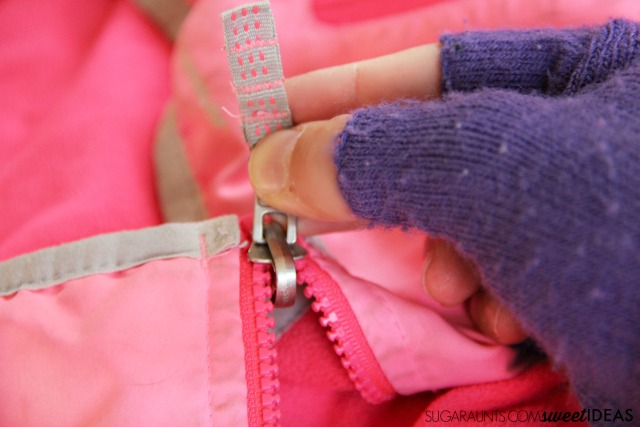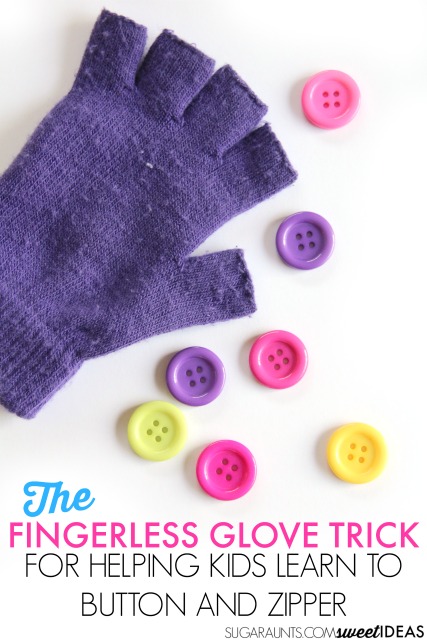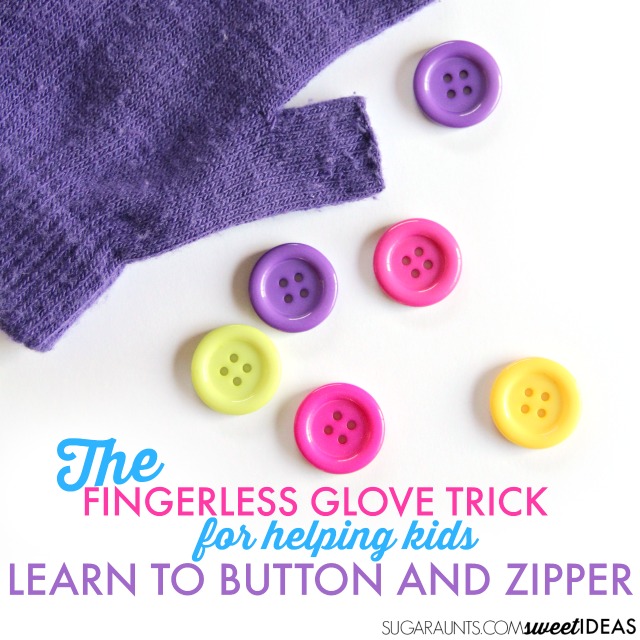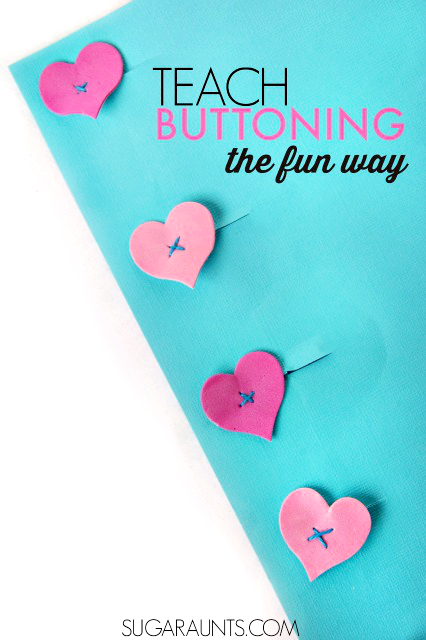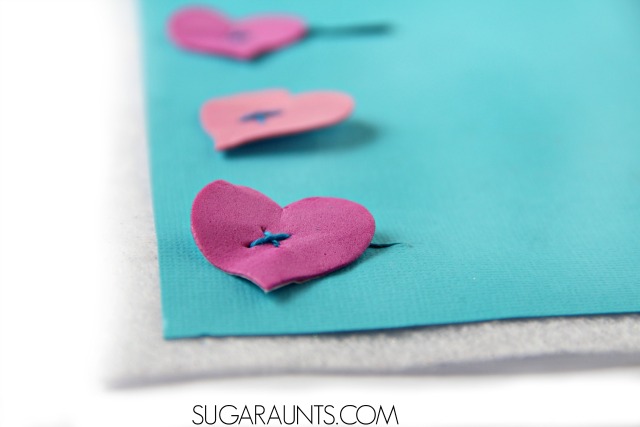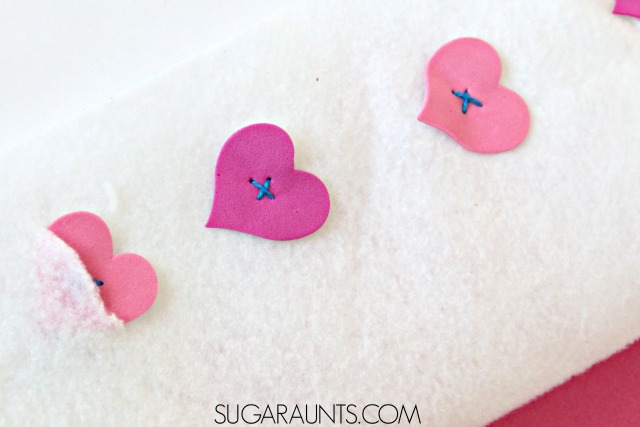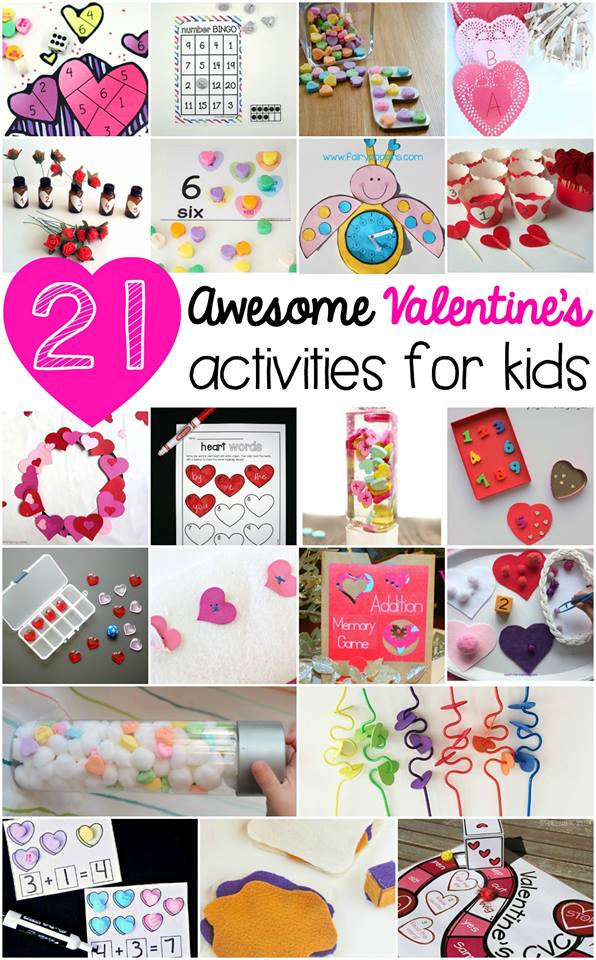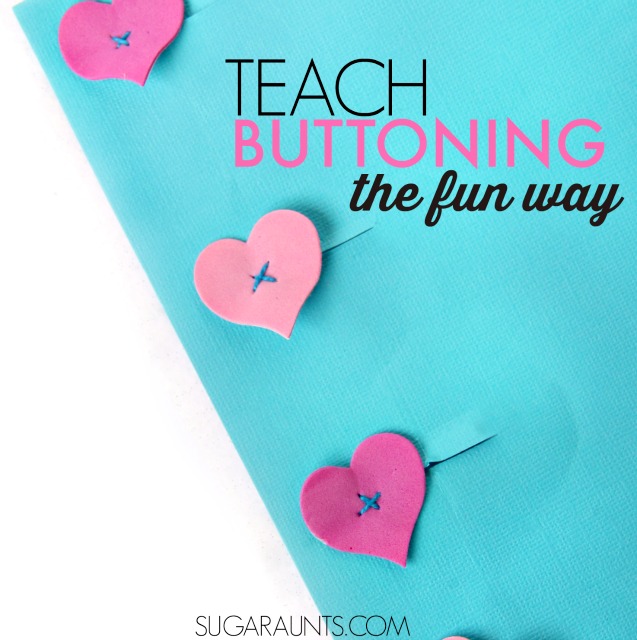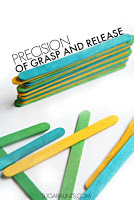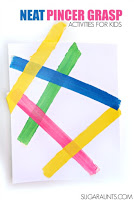Using a few fun buttoning activities is powerful when it comes to teaching kids how to button. When you add fun button practice to the functional task of learning to button a shirt or pants, kids can gain independence. Let’s check out some fun buttoning and unbuttoning activities that kids will love. Get ready to fasten a button and build skills!
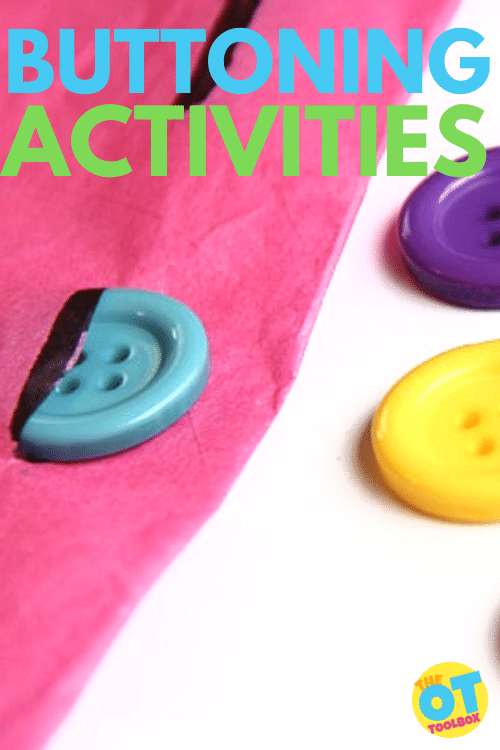
Today, I’ve got a creative way to practice a fine motor task that is often times a tricky for little fumbling fingers: teaching kids how to button…and with a recycled egg carton no less!
Read more for creative tips and tools to practice buttoning with kids: As an Occupational Therapist working with kiddos, I often times had children (and adults!) with goals to improve functional skills like buttoning and managing clothing fasteners.
The best thing (to me) about OT is helping folks to work towards independence in meaningful activities and encouraging self-confidence in function through fun and creative ways.
Imaging fumbling to fasten buttons in a row on a shirt or jacket. Trying to push that little button through the hole of the shirt, but struggling. But, you have to keep working on it, because it’s something you want to do yourself. But it’s just so hard. Still, you keep trying. Over and over again. It’s just not fun.
That’s where fun button practice activities come into play!
This egg carton buttoning activity is definitely fun and works on a task that can get real boring, real quick.
There is something a little more happy about these buttons and a recycled egg carton. It’s part of our 31 Days of Occupational Therapy series and it’s been a big hit in our house, lately.
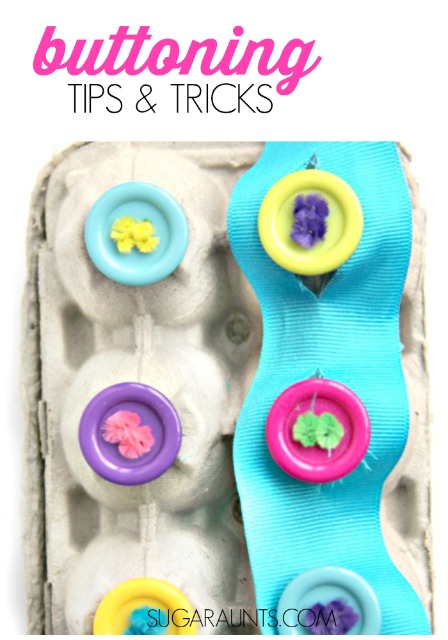
Skills needed for buttoning
First, let’s talk about why buttoning a shirt is so hard for some kids. When teaching a child to button a shirt or unbutton clothing, sometimes breaking down the task of HOW to button is the hardest part.
You really need a lot of skills in order to button a shirt.
- Both hands need to work together in a coordinated manner while doing different movements.
- Buttons are small in most cases and require a good grasp to hold the edge of the button
- Hands need intrinsic hand strength and arch development to hold the button and push it through the button hole.
- Then there is the other hand working to hold that button hole, with bilateral coordination.
- But first, you need to make sure the buttons and holes are lined up correctly.
- There is a lot of problem solving and sequencing involved in buttoning.
All of this is done while wearing the shirt and at an awkward position, while looking down. If any of these areas are a problem area, then buttoning a shirt immediately becomes much more difficult.
Teach Kids How to Button
There are a few ways that make learning the steps of buttoning a bit easier:
- Practice unbuttoning first.
- Break down steps of buttoning.
- Use consistent verbal and physical cues when helping the child button.
- If aligning buttons to the button holes is a difficult task, show them how to take this part a step at a time, by lining up the bottom button to the bottom hole.
- Practice buttoning from bottom to top. The child will have more room to work and a better view of the buttons at the bottom of a vest or shirt.
- Practice buttoning with shirts/vests that are not visually distracting. Use a white shirt with colored buttons. You can also add a dot of paint to buttons to make them stand out.
- At first, practice buttoning with a shirt laying on the child’s lap or table, and positioned like it would be on their body. Practicing with a different shirt on the table gives the child more room to see the buttons and how their hands are working than if they are buttoning on their body.
- Then, practice with an over-shirt, with the shirt on their body.
- Practice with larger buttons.
- Iron the button and hole edges of the shirt for a stiffer material to work with.
- Practice with a jacket that is made with a thicker material, like corduroy.
- For younger kids (age 3) you can snip the button hole just a little to make buttoning easier.
Backward Chaining in Buttoning
Backward chaining is a therapy term that refers to breaking down a task in order to teach specific skills. In learning how to button or unbutton, therapists can use backward chaining to teach kids how to do each step of buttoning in a sequence.
Backward chaining encourages success in buttoning by starting with the last step.
You can teach buttoning skills this way by working on just this last step with your child until they have mastered it. Then, work on the previous step. Gradually, add more steps to the buttoning task until they are able to complete the whole process.
Backward chaining encourages self-confidence and success in learning new skills.
Buttoning Activities
This buttoning activity uses a recycled egg carton to work on the specific skills needed to fasten buttons. These are great buttoning activities for preschoolers and children struggling with the fine motor components of managing buttons on their clothing.
Try these buttoning activities:
- Work on the fine motor skills needed to button by pushing coins into a piggy bank.
- Cut a slit in felt and push a coin through the felt.
- Push buttons through the lid of a recycled container.
- Try these felt buttons to work on precision and dexterity.
- Cut slits in paper and push buttons through the slits.
- Make an egg carton buttoning activity (below)
- Cut a slit in cardstock or construction paper. Push buttons through the slits. Try it with tissue paper, too.
- Hold coins or buttons on the edge and press them into play dough so they are standing on their edge.
- Thread beads onto pipe cleaners.
RELATED READ: Teach Kids How to Tie Their Own Shoes
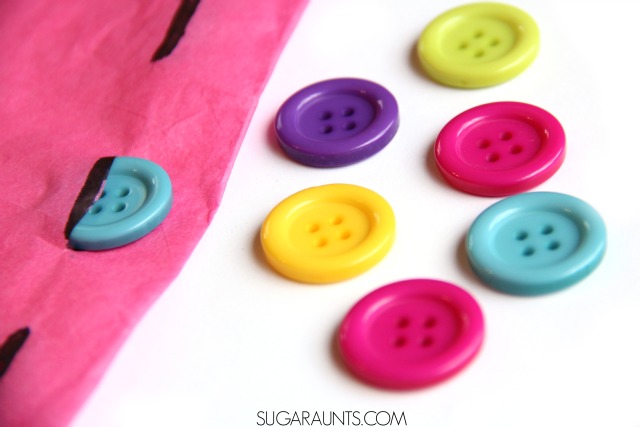
RELATED READ: The Ultimate Guide to Teaching Kids to Dress Themselves
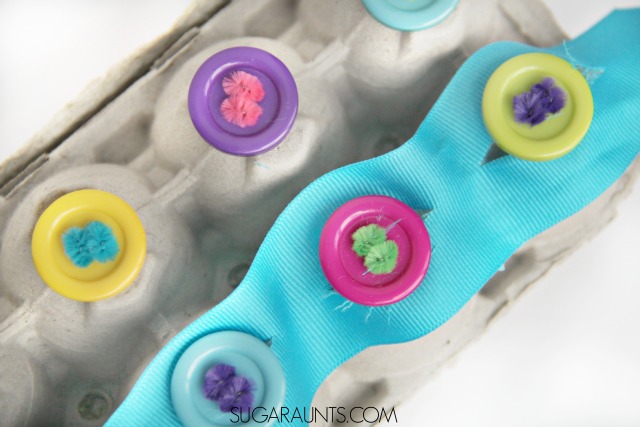
Egg Carton Buttoning Activity
This is a fine motor activity to make the buttoning tool, so get the kids involved in the prep-work! We made a similar egg carton shoe tying tool recently.
Yes, sure. You can work on buttoning and shoe tying with a plain old shirt or shoe. But, sometimes it is good to bring new experiences into the learning process.
Adding a new way to practice makes it less boring and kids will be excited to try working those buttons again and again.
You’ll need just a few materials to make this egg carton buttoning activity:
Amazon affiliate links:
- Egg carton
- Buttons
- Pipe Cleaners
- Something to poke holes into the egg carton. I used the sharp end of a Corn Holder.
- Ribbon, tissue paper, paper
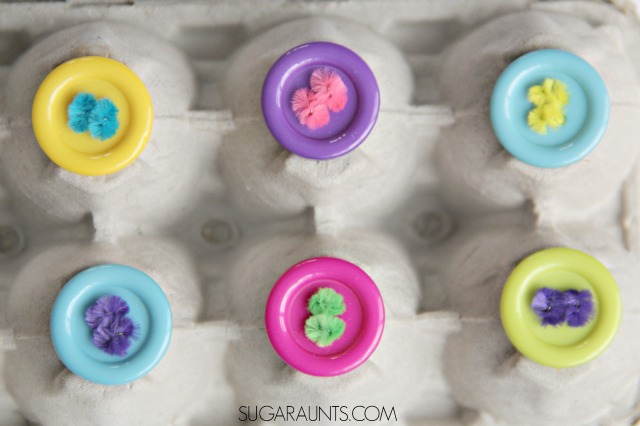
RELATED READ: Teach Kids How to Zipper
- Start by poking the corn holder into the bottoms of the egg carton. You want four holes for each button.
- Then thread the pipe cleaner through one of the holes, and through the button and back down through the egg carton, like this:
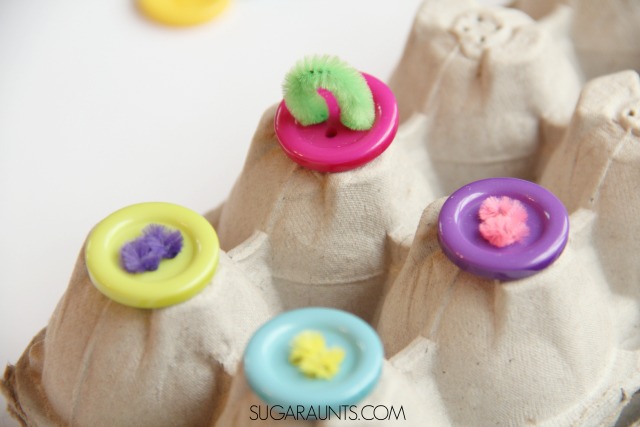
3. Bend the pipe cleaner back up through the holes and back down to the inside of the egg carton.
4. Twist the pipe cleaner ends together to secure the button. You will want the button to have some give and not be completely flat against the egg carton.
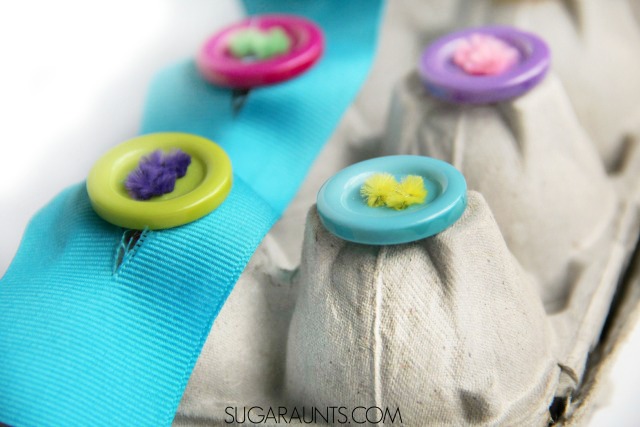
5. Then, start practicing the buttons.
6. Use a long ribbon with slits cut lengthwise.
7. Practice with the egg carton on your child’s lap or on the tabletop in front of them.
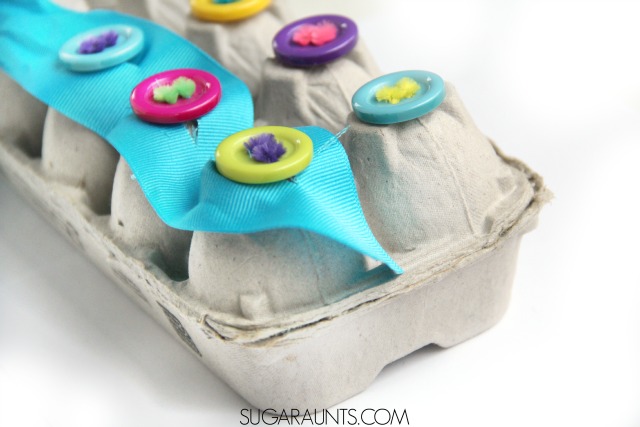
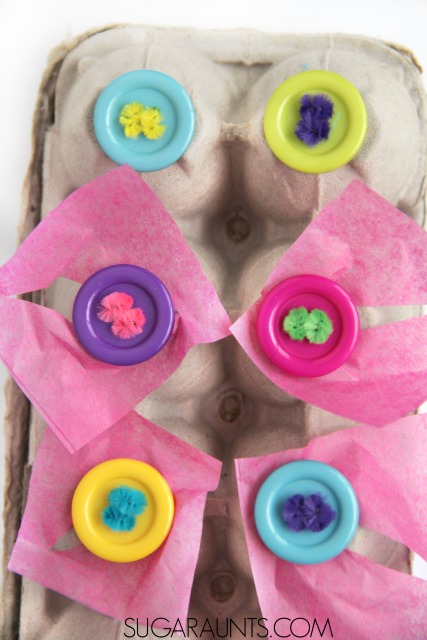
For more buttoning activities for kids, try using paper on the buttons, too. Use tissue paper on the buttons for more refined buttoning practice. We also used squares of cardstock and cut up cereal boxes. Make sure the buttons are not flush against the egg carton.
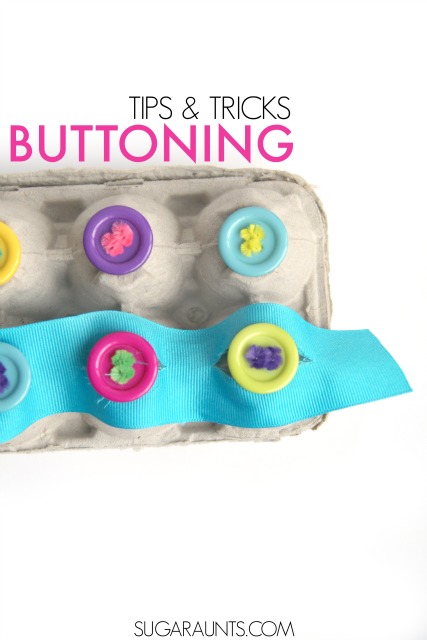
More Buttoning Activities
Looking for even more ways to practice buttoning? These are some of my favorite items on the market.
When a child needs to work on some skills for their independence, toys can be the way to go! These toys are great for developing independence in dressing skills. This post contains affiliate links.

Small World Toys Learning – Before and After is great for kids who need to gain insight into concepts of before and after. You can not put your shoes on before you put your socks on. Cognitive concepts can be tricky for children to understand if auditory processing of these ideas are difficult.
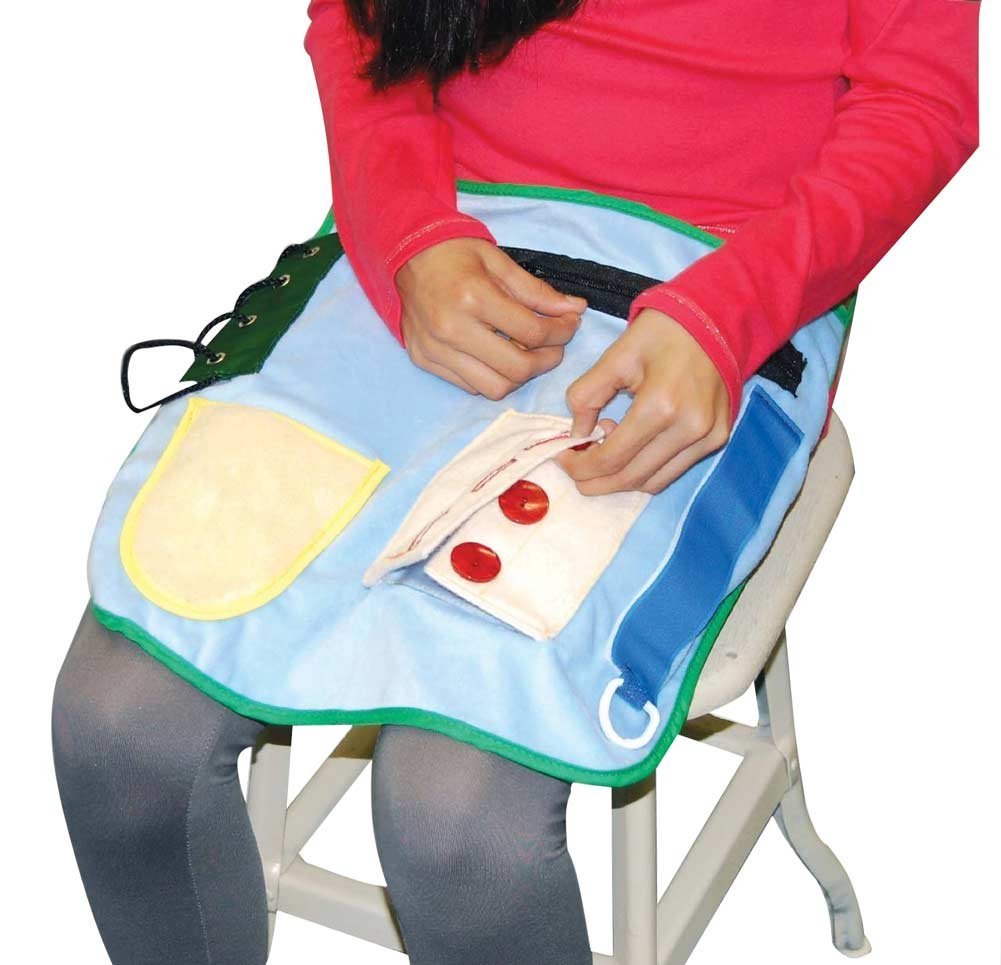

This Special Needs Sensory Activity Apron (Children & Adult Sizes) allows the child to manage the clothing fasteners right on their lap. This is so great for children with motor planning difficulties.
You could also use a Montessori Buttoning Frame with Large Buttons Dressing Frame and lay it right on the child’s lap.
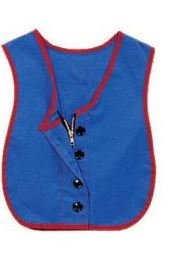
Childrens Factory Manual Dexterity Vests – Button-Zipper Combo Vest is a good way to practice buttons and zippers right on the child.
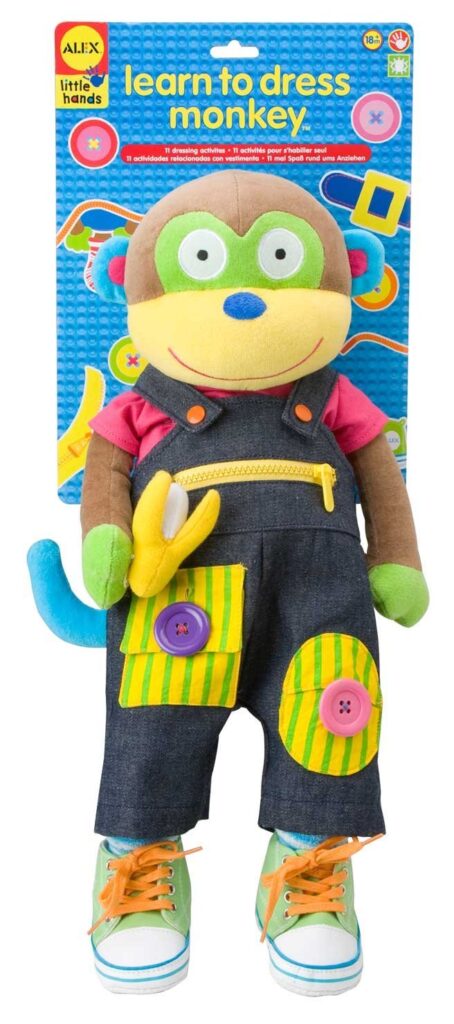
Learning to Get Dressed Monkey is a fun toy for clothing fasteners.
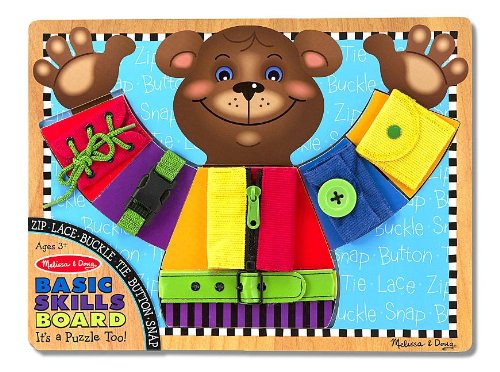
Practice basic clothing fastener skills like buttons, zippers, snaps, and ties with the Melissa & Doug Basic Skills Board. The bright colors are fun and will get little fingers moving on clothing fasteners.
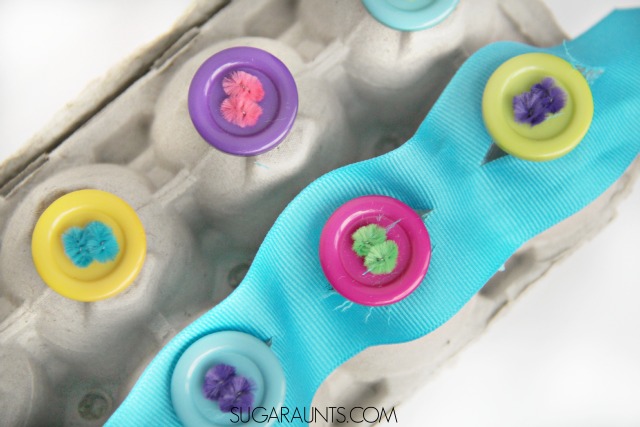
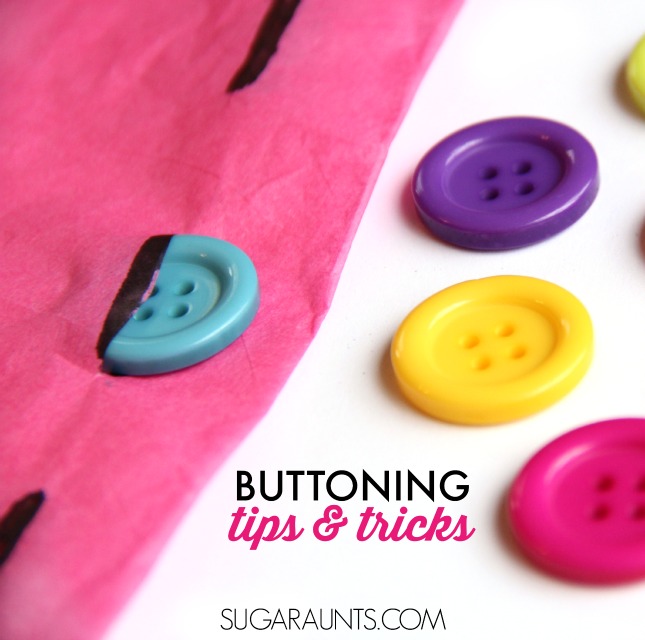
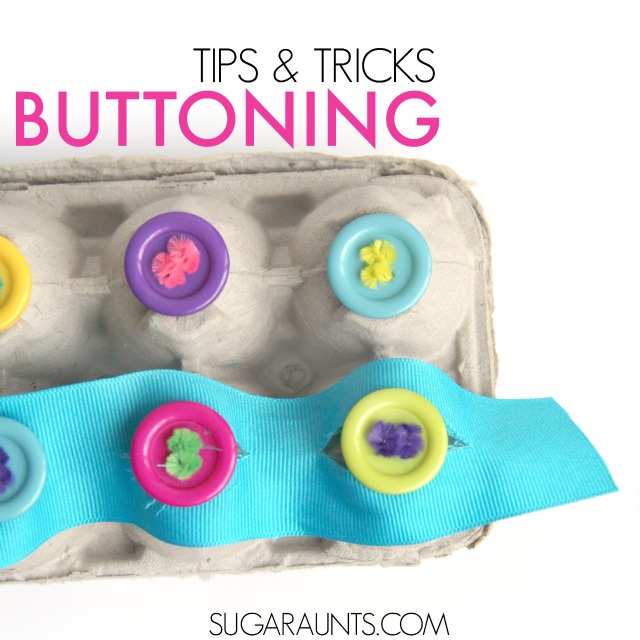
Working on fine motor skills, visual perception, visual motor skills, sensory tolerance, handwriting, or scissor skills? Our Fine Motor Kits cover all of these areas and more.
Check out the seasonal Fine Motor Kits that kids love:






Or, grab one of our themed Fine Motor Kits to target skills with fun themes:
- Frogs Fine Motor Kit
- Unicorns Fine Motor Kit
- Vehicles Fine Motor Kit
- Apple Fine Motor Kit
- Back to School Kit
- Sports Fine Motor Kit
- Outer Space Fine Motor Kit
- Fairytale Fine Motor Kit
- Plus more in our shop!
Want access to all of these kits…and more being added each month? Join The OT Toolbox Member’s Club!

Colleen Beck, OTR/L has been an occupational therapist since 2000, working in school-based, hand therapy, outpatient peds, EI, and SNF. Colleen created The OT Toolbox to inspire therapists, teachers, and parents with easy and fun tools to help children thrive. Read her story about going from an OT making $3/hour (after paying for kids’ childcare) to a full-time OT resource creator for millions of readers. Want to collaborate? Send an email to contact@theottoolbox.com.


